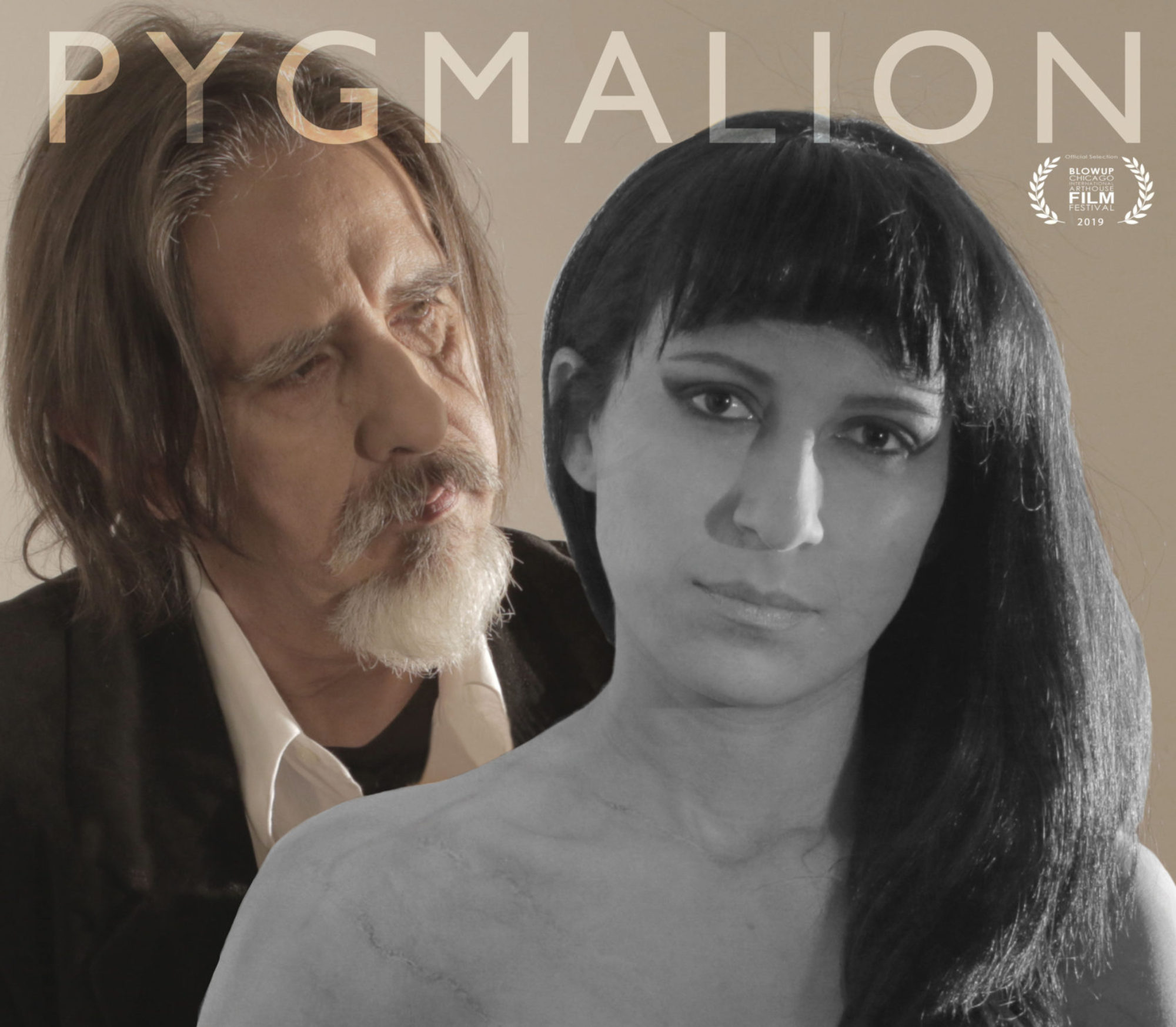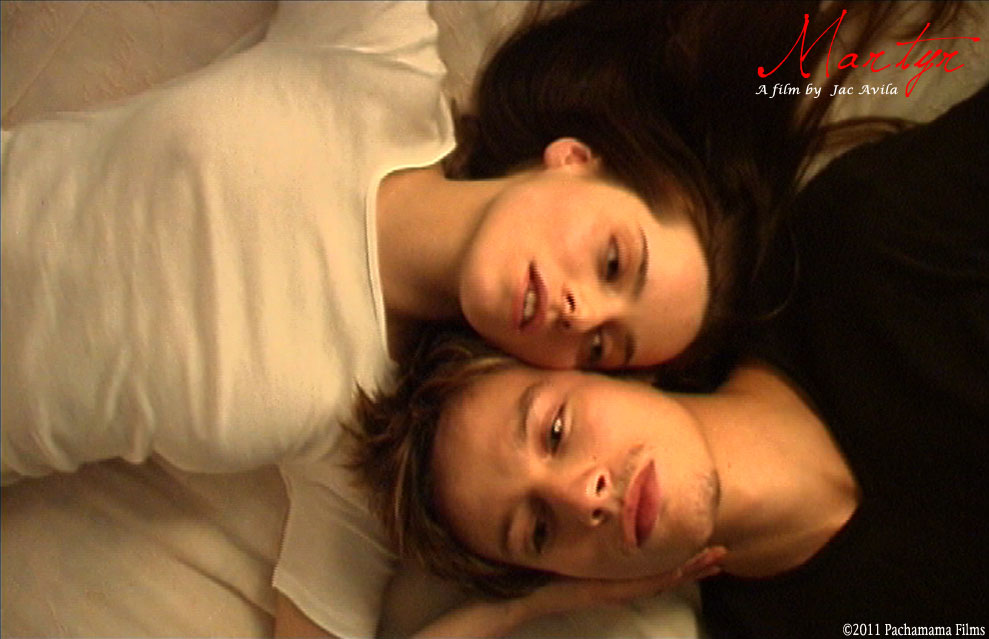FROM THE VAULT:
REVIEWED BY CHARLES LONBERGER
Originally published on January 5, 2014 on The Beverly Hills Outlook.
With the release of this boldly offbeat study in a failing relationship in 2005, Pachamama Films announced themselves on the World Stage. For a company that conjoins European and South American sensibilities, it was somehow appropriate that the two continents would meet halfway, filming the downbeat tale in New York.
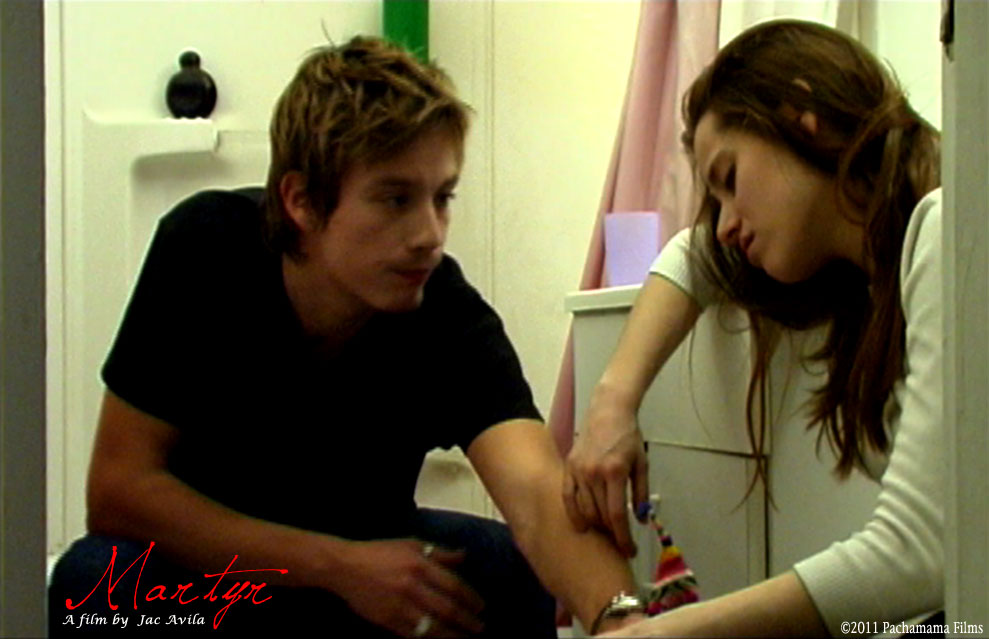
The production takes itself and the relationships it portrays seriously, but, as scripted by Jac Avila, does not avoid the melodramatic. This disguises a certain self-pity implicit in portraying a Dominant as the real victim, and, in truth, the character of Tadeusz, acknowledged to be “a bit sadistic,” is actually the one who is made the real sacrifice through his death-by-homicide.
Despite Avila’s dense and schematic treatment, the film ultimately succeeds, due to its ability to fictionalize its central character, Camille’s, own personal cavalry and her courage when at the crossroads, exhibiting “passion at the very moment of death”, pursuing “peace after suffering.”
The narrative deals uniquely and with emotionally painful honesty, with the dissolution of an ill-fated relationship between Vanilla and Kink, suggesting that never the two shall meet.
There is an interesting attitude toward Christianity betrayed by the script: on the one hand, its sadistic iconography is celebrated, even as, explicitly, the religion itself is criticized (or, at least, St. Augustine is) as misogynistic and Anti-Semitic. There is an implicit blasphemy is musing that “God sends his only begotten daughter” to her fate on the cross, multiple versions of which are presented.
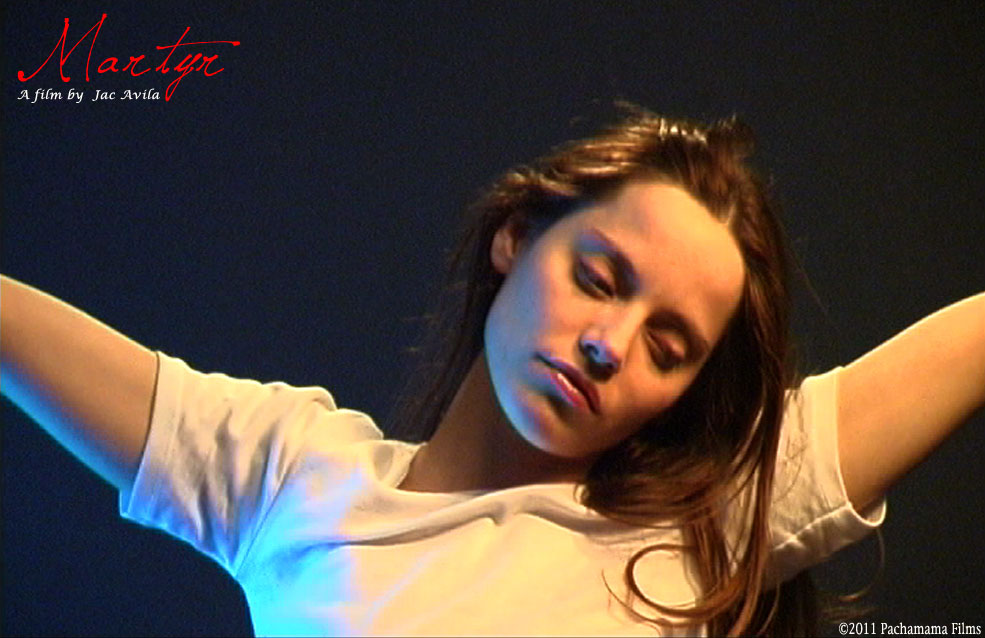
At its heart, the treatment is deeply Romantic, a trait not only betrayed by a soundtrack which prominently features Chopin, but also by its afterward wherein Camille and Tadeusz converse in the afterlife, which suggests that Love is Stronger than Death, as well as, more perversely, by a kiss between soul mates of shared menstrual blood, a gesture by which the Dominant male is shown to accept his female sub’s “true (implicitly vile) nature.” The multinational nature of the production is voiced by having its dialogue spoken in English and French, interchangeable.
The film succeeds because of the confident direction of Jac Avila, which treats a contemporary personal journey as it were an Illustrated Manuscript, thereby adapting the Medieval to the contemporaneous. Employing super impositions, and intimate hand-held shots, his primary perspective is omnipotent in its bird’s eye views. While the cumulative effect is of moodiness, his scene of Camille’s crucifixion is convincing. Interestingly, he suggests modeling to be a form of Martyrdom.
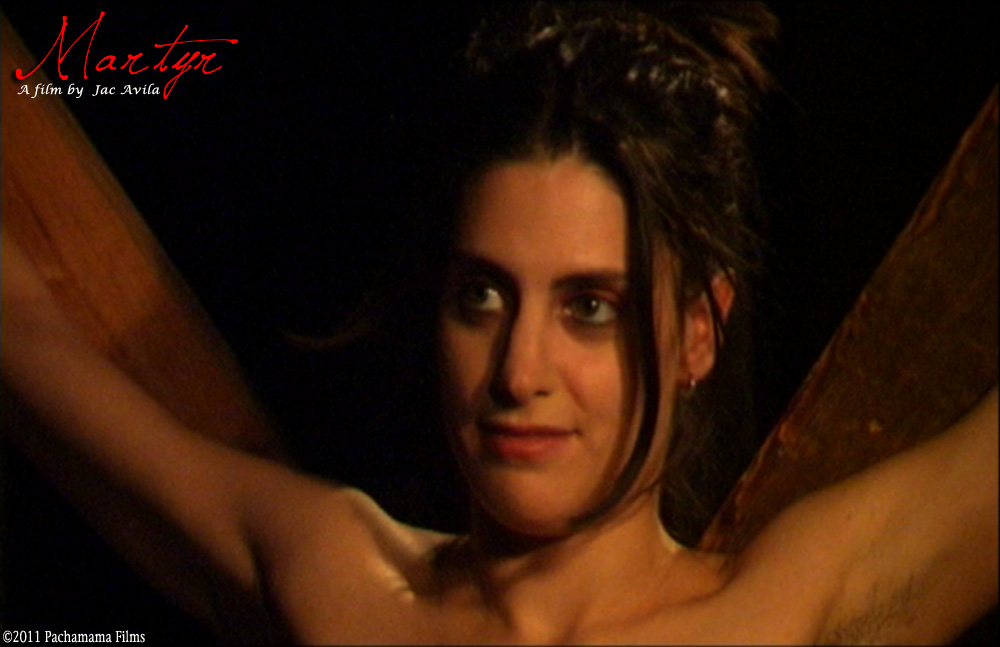
The cinematography by Avila himself, using a pseudonym, and Raphaelle Gosse-Gardet, is striking in its imagery, particularly those involving dramatic lighting and physical suspension. The editing by Margot Chevallier jump cuts still shots together, contrasts differing breakups and snappily imitates the sting of the whip.

The soundtrack begins by quoting Middle Eastern vocals, employs Mozart’s Requiem for drama and van Bingen for ambiance, while the sound design illustrates emotional turbulence via thunderstorms
As might be expected for a company’s first feature, the acting is somewhat uneven.
The best performance is delivered by Carmen Paintoux as Camille. She merges the physical and the cerebral, is “not really feeling too good,” “really needs it,”and believes that “everyone should be forced to sacrifice.” She “bleeds for real,” knows “how to suffer,” bathes in her own blood, and tastes her own menses, before sharing it with her confidante. She martyrs herself as her identity morphs into the Saint she is researching.

As her hopelessly Vanilla boyfriend, Julian, Michael Trodoux “hates periods,” is “not into that”, and is homicidally jealous. The only problem with his interpretation is that we are left wondering why he was with Camille, dissimilar as they are, to begin with.
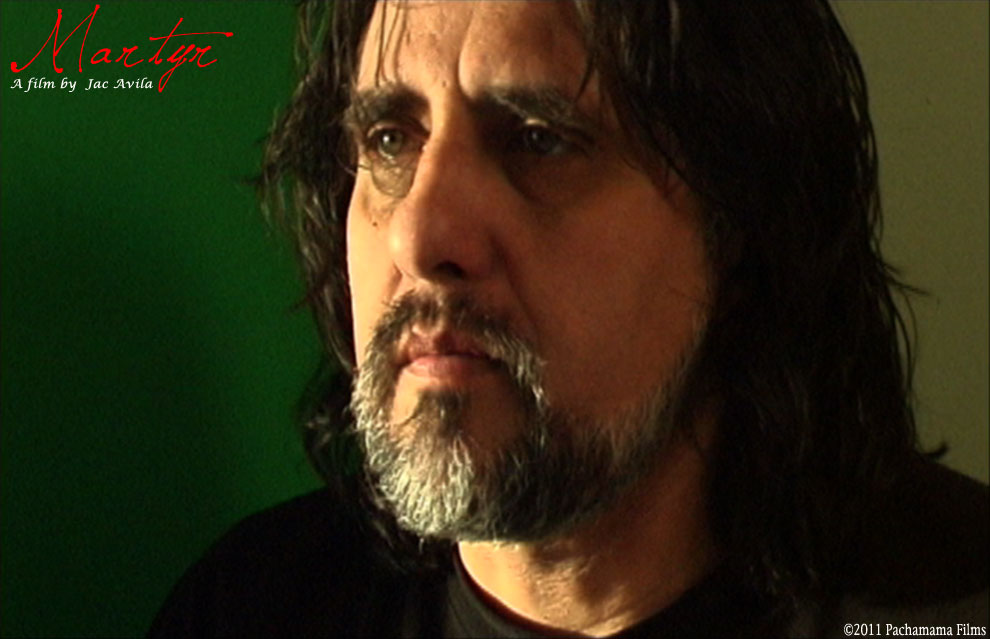
As Tadeusz, Avila himself practices photography as crucifixion fantasies and “manipulates you to get his kicks.” He “twists meanings.” His interpretation makes his character seem so reasonable, that he fails to convey, his actions to the contrary, the darkness that draws Camille to him. At the same time, this pose is comforting for an audience unfamiliar with, or afraid of, The Dark.
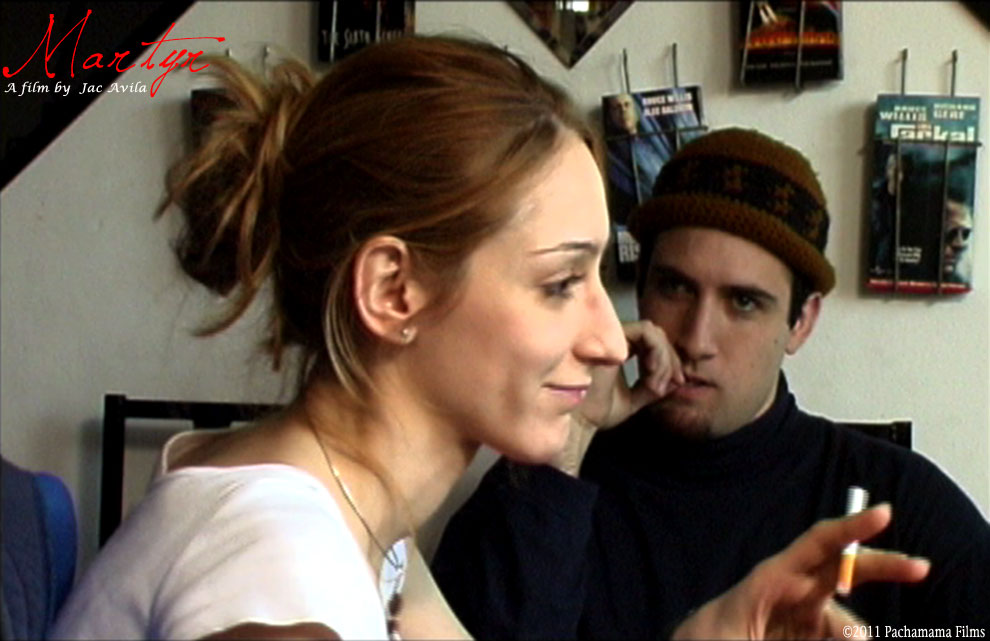
While, as “Gay” Erica, Natacha Petrovich intends to be the St. Julia to Camille’s St. Eulalia, that assignment is actually assumed by Veronica Paintoux, in the role of Giselle, for which she is rewarded by being lanced and hung on a cross, as well.
The weakest link in the cast is Erik Antoine’s Dave, who wise cracks and brandishes a pistol…
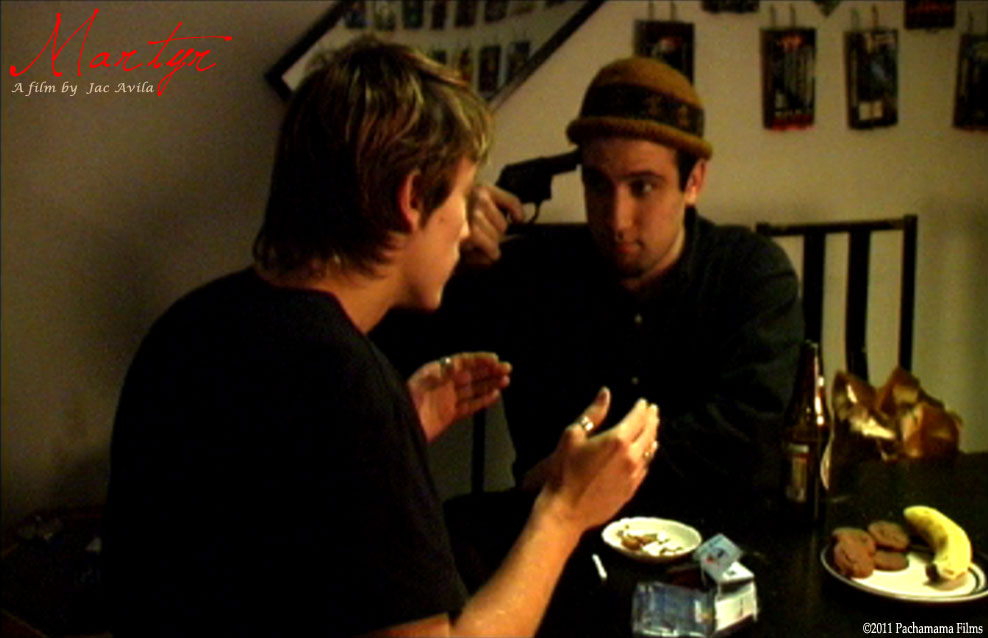
But the boldness in presenting what has been a socially unacceptable fetish in a sympathetic light, as well as the convincing realization and plasticity of its crucifixion scenes, marked an audacious beginning.
